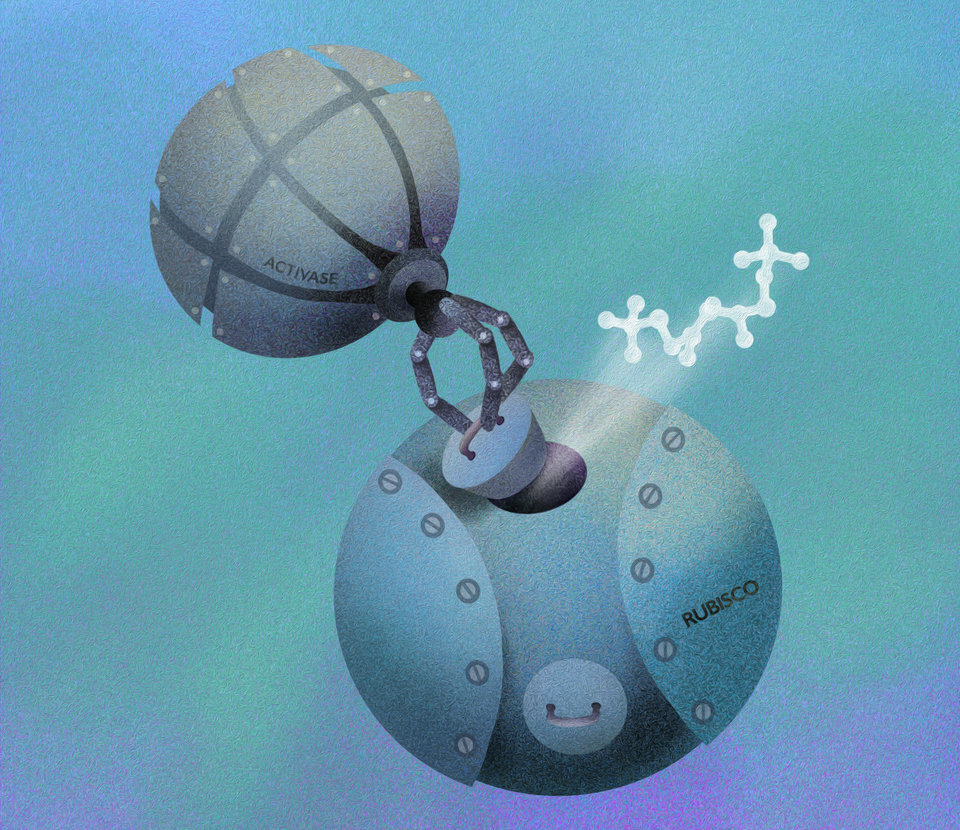Repairing the photosynthetic enzyme Rubisco
Date: 23.10.2020
The enzyme Rubisco catalyzes the assimilation of CO2 from the atmosphere into organic matter. This is the central step in photosynthesis that generates sugar molecules for the production of essentially all biomass.
 Despite its pivotal role, Rubisco works relatively slowly and is easily inhibited by sugar products. By improving the function of Rubisco Hayer-Hartl hopes to be able to boost the process of photosynthesis. The goal is to address the growing global demand for food and reduce the current greenhouse gas-induced climate change.
Despite its pivotal role, Rubisco works relatively slowly and is easily inhibited by sugar products. By improving the function of Rubisco Hayer-Hartl hopes to be able to boost the process of photosynthesis. The goal is to address the growing global demand for food and reduce the current greenhouse gas-induced climate change.
The enzyme Rubisco activase, Rca, is present in plants, algae and certain cyanobacteria. Rca is a ring-shaped complex of six subunits with a central pore. How exactly Rca interacts with the inhibited Rubisco and releases the bound sugar from the active site pocket of Rubisco, restoring its CO2 fixing activity, was unclear until now.
With the help of biochemistry, crystallography and cryo-electron microscopy, Hayer-Hartl & colleagues have now succeeded in deciphering the molecular mechanism of a cyanobacterial Rca. They discovered that the Rca grabs the N-terminal tail of Rubisco and by pulling and pushing actions, using the energy of ATP, opens the active site pocket. This results in the release of the inhibitory sugar molecule.
Manajit Hayer-Hartl concludes: "Rca is absolutely required for Rubisco to function optimally. Deciphering its mechanism and dual function in cyanobacteria will further help us to make photosynthesis more effective in the future. Hopefully, this will get us closer to our ultimate goal, to increase agricultural productivity."























